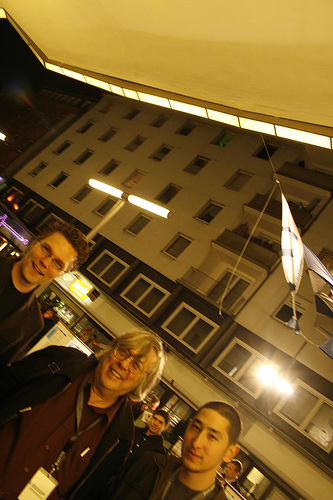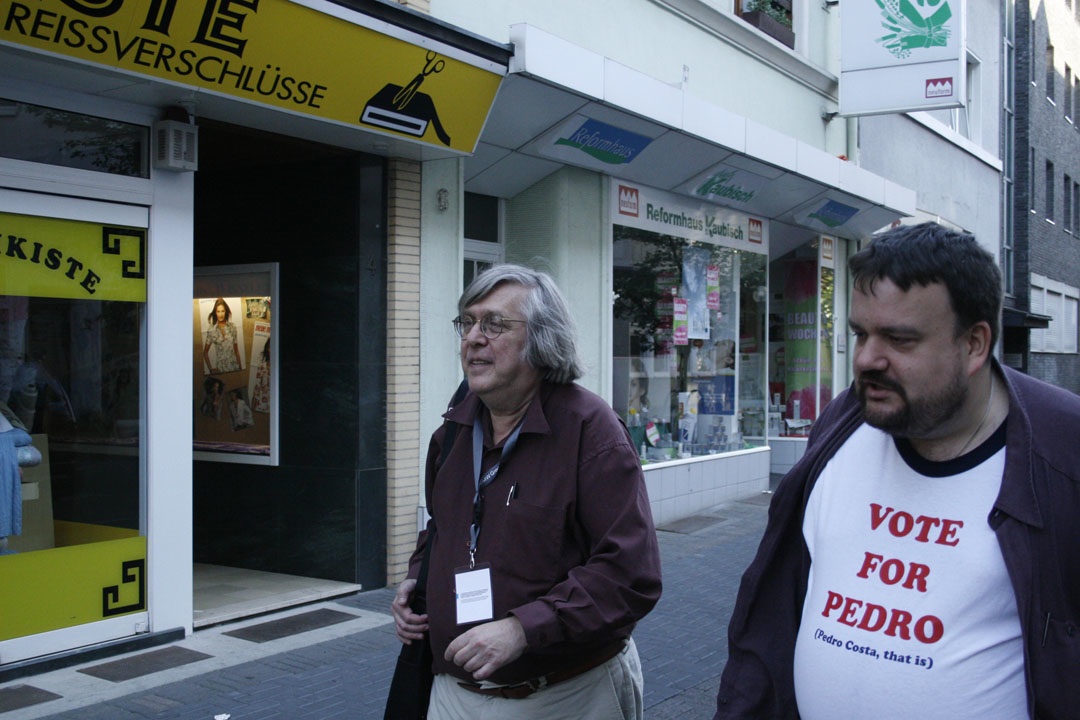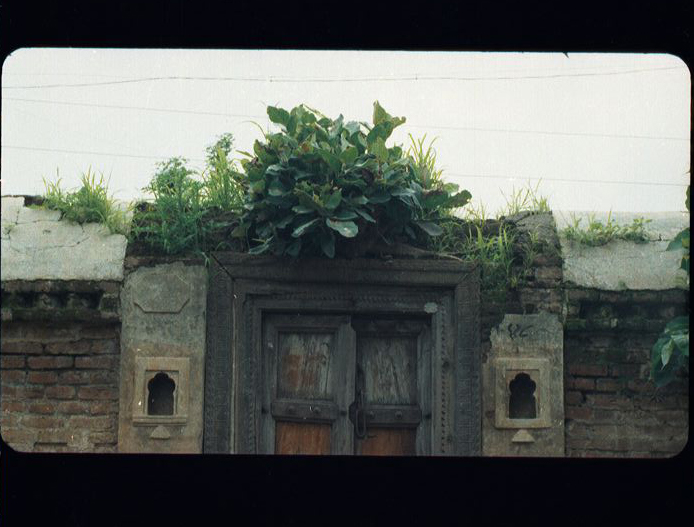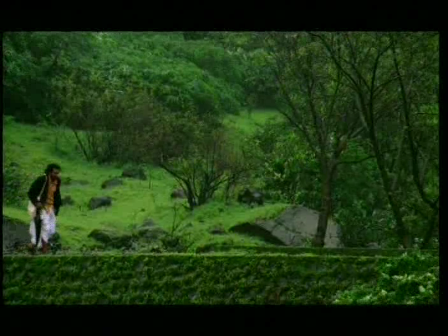This is the second of my bimonthly columns written for Cahiers du Cinéma España, which ran in their third (July-August 2007) issue. It seems fitting to post it three years later because I’m back at the same festival again, serving again on the FIPRESCI jury. It’s hard not to feel an immense sadness about the intervening death (by murder, in Manila, along with his Slovenian partner Nika Bohinc) of Alexis Tioseco, my fellow juror, who can be seen here in the first photo, on the far right. This was most likely taken by Olaf Möller, one of the festival’s programmers, who can be seen in the second photo below, taken by Alexis.
Amit Dutta, incidentally, whose Kramasha won our FIPRESCI prize three years ago, will be attending the festival for the first time this year, and presenting a program tomorrow night. (Update, a day later: Unfortunately, Dutta had to cancel his visit due to health reasons, but two programs of his films will still be presented.) — J.R.
The prospect of attending a festival of short films has always seemed difficult to me because of the number of aesthetic gear changes involved in moving from one film to the next. But the prestige of the Oberhausen International Film Festival, now 53 years old, has always impressed me —- not only because of the famous Oberhausen Manifesto of 1962, signed by Alexander Kluge and Edgar Reitz, among others, but also because Forough Farrokzhad’s The House is Black won its only significant prize in Oberhausen the following year.
This radically humanist documentary about a leper colony is the only film of consequence by one of the greatest Iranian poets of the 20th century, who died in a car accident in her 30s —- a quasi-religious as well as erotic figure in Iran whose cultural significance seems to combine the tragic soulfulness and political defiance of Bessie Smith with the erotic allure of Marilyn Monroe. The film has been released on DVD in a superb French edition (included in Cinéma 07, printemps 2004 — an issue of the superb biannual journal of film history edited by Bernard Eisenschitz); and in a less good American edition (available from Facets Video). For me, it’s one of the very few successful fusions of poetry and cinema. And, along with the even more unknown When it Rains (1995) of Charles Burnett, it was the only short film to make it into my ten-best list for Sight and Sound in 2002.
So when my friend Olaf Möller —- a knowledgeable film critic and programmer based in nearby Cologne —- suggested that I serve on the FIPRESCI jury at Oberhausen, and invited me to participate in a panel there devoted to the privatization of film experience (to be held on the birthday of Orson Welles, Max Ophüls, and Olaf himself), it was hard to turn him down. And I must confess that once I started to watch the 64 films selected for competition with my fellow jurors, the Manila-based Alexis A. Tioseco and the Cologne-based Oliver Baumgarten, I was very impressed by the critical intelligence of the programming. The most difficult thing to do in combining several short films into single programs is to make them compatible with one another, and this was done with a lot of thoughtfulness, despite the facts that much of the overall selection was mediocre —- and that one of my favorite recent experimental films, Wael Nourredine’s July Trip (a percussively edited personal diary devoted to the recent war in Lebanon), didn’t even make it into the festival as a noncompetitive entry when it was submitted.
Our FIPRESCI prize went to Amit Dutta’s 22-minute Kramasha, from India —- a dazzling, virtuoso piece of mise en scène in 35-millimeter, full of uncanny and often layered imagery about the way the narrator imagines the past of his village and family. It reminded me in spots of Alain Resnais, not only because of the sensual camera movements and surreal tableaux in and around ruined buildings, but also because of the contrapuntal relationship between these images and what the narrator says he imagines.
The Festival gave 14 prizes and a total of 30,000 Euros, concluding with a ceremony that lasted well over two and a half hours. Part of what made the event interesting to me was the same default position that sustained me through many of the shorts I saw: the notion that at a festival as genuinely international as this one, a certain education was possible, however limited, in how people in other parts of the world were living and thinking. For an American who feels oppressed much of the time by my country’s compulsive (and/or compulsory) isolationism, this can feel like a whiff of fresh air.




